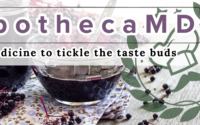Investigation of Rosa species by an optimized LC-QTOF-MS/MS method using targeted and non-targeted screening strategies combined with multivariate chemometrics
Phytochem Anal. 2024 Mar 4. doi: 10.1002/pca.3345. Online ahead of print.
ABSTRACT
INTRODUCTION: Plants of the Rosa genus are renowned for their pronounced and pleasant aroma and colors.
OBJECTIVE: The aim of this work was to develop a novel liquid chromatographic triple quadrupole time-of-flight tandem mass spectrometric (LC-QTOF-MS/MS) method for the investigation of the bioactive fingerprint of petals of different genotypes belonging to Rosa damascena and Rosa centifolia species.
METHODOLOGY: Central composite design (CCD) of response surface methodology (RSM) was used for the optimization of the LC-QTOF-MS/MS method. The method was validated and target, suspect, and non-target screening workflows were applied. Statistical analysis and chemometric tools were utilized to explore the metabolic fingerprint of the Rosa species.
RESULTS: RSM revealed that the optimal extraction parameters involved mixing 11 mg of sample with 1 mL of MeOH:H2 O (70:30, v/v). Target analysis confirmed the presence of 11 analytes, all of which demonstrated low limits of quantification (LOQs; as low as 0.048 ng mg-1 ) and sufficient recoveries (RE: 85%-107%). In total, 28 compounds were tentatively identified through suspect analysis. Non-target analysis enabled the generation of robust OPLS-DA and HCA models that classified the samples according to their species with 100% accuracy.
CONCLUSIONS: A novel LC-QTOF-MS/MS method was developed and applied in the analysis of 47 R. centifolia and R. damascena flowers belonging to different genotypes.
PMID:38439140 | DOI:10.1002/pca.3345

